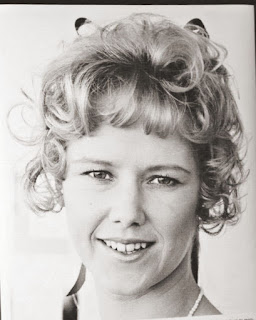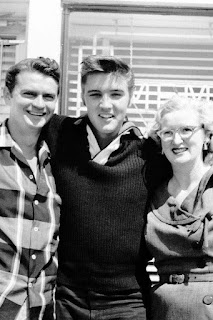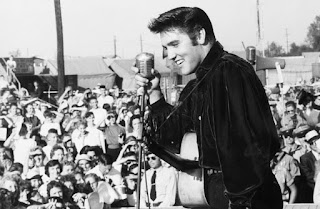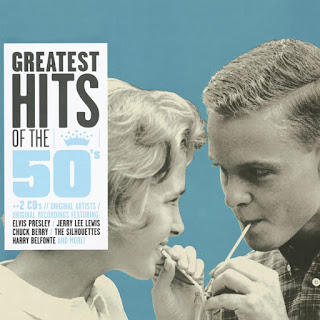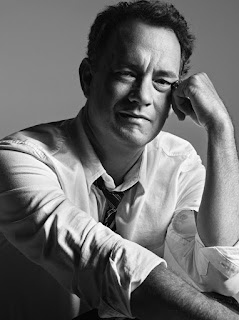Network Science and the Effects of Music Preference on Functional Brain Connectivity: Listening to music that is liked or a favorite song affects functional connectivity in regions involved in selfreferential thought and memory encoding, such as the default mode network and the hippocampus. While perhaps everyone intuitively understands the mental experience or feeling when listening to his or her preferred music, whether it is Beethoven’s 9th Symphony or Les Miserables, or when listening to their favorite rock song, we show here that this similarity of experience manifests in the brain by engaging the DMN. As the first study to apply network science methods to ‘theory of the mind’, these results provide a glimpse into the neural patterns underlying the emotion-cognitive states associated with listening to preferred and favorite music. Source: www.nature.com
The British musicologist Howard Goodall said about Paul McCartney: "He had an intuitive melodic gift: in terms of tunes, he's one of the greatest songwriters who ever lived." This, Goodall says, set him apart from John Lennon; by way of comparison. Goodall puts McCartney alongside Schubert, Mozart, Verdi and Puccini. "In Puccini's case, you're talking about maybe 20 great tunes. In Schubert's case, maybe 100. But Paul McCartney is up there in the 100+ category." Adam Gopnik, in The New Yorker, described McCartney's influence/gift this way: "A genius for melody is a strange, surprisingly isolated talent, and doesn’t have much to do with a broader musical gift for composition; Mozart certainly had it, Beethoven not so much. Irving Berlin could barely play the piano and when he did it was only in a single key (F-sharp major: all the black keys), and yet he wrote hundreds of haunting tunes; André Previn, who could do anything musically as a pianist and a conductor, wrote scarcely a single memorable melody, although he did write several shows and many songs. McCartney had the gift in absurd abundance. Someone could get a Ph.D. thesis out of studying the major-minor shifts in his Beatles songs: sometimes the change is from verse to chorus, to mark a change from affirmation to melancholy, as in “The Fool on the Hill”; sometimes it’s in the middle of a phrase, as in “Penny Lane,” to capture a mixed mood. These are things that trained composers do by rote; McCartney did them by feel—like Irving Berlin writing for Fred Astaire, he was a rare thing, a naturally sophisticated intuitive. In 1966, the critic Kenneth Tynan, a hard man to please, proposed doing a profile of Paul, in preference to John, because he was “by far the most interesting of the Beatles and certainly the musical genius of the group.” Source: www.newyorker.com
Philip Norman admits in his biography of Paul McCartney that in his earlier biography of the Beatles called “Shout!”, he accepted the cheap stereotype of Paul as a pop trivialist, in comparison with his edgy partner John Lennon. Paul was happy to push the envelope but didn’t support John when he wanted to pose nude on an album cover or insisted that an eight minute sound collage be inserted into a Beatles album. Paul certainly didn’t support John’s heroin addiction. Now Philip Norman sees that Paul McCartney was not only a man of genius but also someone who has handled the madness of fame exceptionally well. Paul is depicted as a caring father and grandfather, a man who made a bad rebound marriage after losing his much loved wife Linda, but who has otherwise spent the past decades entertaining new generations of fans. As Norman shows, McCartney has worked so hard at seeming dismayingly normal that it is easy to miss the least ordinary thing about him: the magnitude of his melodic gift. In 1970, McCartney and the Eastmans launched a lawsuit to break up the Beatles partnership. That became the trigger for John Lennon’s toxic onslaughts against his former partner, feeding all the hostile stereotypes that Norman is now trying, decades later, to remedy.
Seen from the 21st century, the great rupture of early rock and roll looks more ideological than musical, more a matter of attitude and emotion. Every Night by Paul MacCartney sounds like a continuation from Everyday by Buddy Holly and Kiss Me Baby by The Beach Boys. Elvis was The King and all that, but Buddy Holly is more beloved among people who actually know a substantial amount about the history of rock. Holly, along with Chuck Berry, was a real pioneer, playing a chord and hammering the sixth note of that chord on and off in a regular, rhythmic pattern. In the opening pages of Peter Guralnick’s “Sam Phillips: The Man Who Invented Rock ’n’ Roll”, Sam Phillips is equated with Walt Whitman, William Faulkner and Mark Twain. Phillips was not a very good businessman. Other independent labels, like Atlantic, managed to keep their artists and to thrive well into the 1960s. But Phillips got out of the business just as the pop-music revolution that he helped make happen was starting to cash out in a big way. Which would have been the destiny of Buddy Holly if he had walked by Sun Records? Using The Beach Boys' memorable song (and Paul McCartney's favorite song ever): God Only Knows.
By 1950, most people listening to local radio stations. And ninety-six per cent of homes in the United States had a radio. Before the 1940s, radio was dominated by national broadcast networks like CBS, NBC, and Mutual. As a consequence of an F.C.C. policy designed to break up this oligopoly, the licensing of local stations increased from around eight hundred in 1940 to more than two thousand in 1949. By 1940, there were close to half a million jukeboxes in the United States. This is why jukebox plays were charted in Billboard: they were market indicators. In an unsympathetic biography of Elvis Presley, published in 1981, Albert Goldman has Phillips referring to “the nigger sound”; Guralnick makes it clear that Sam Phillips didn’t talk or think that way. And Guralnick is confident that Phillips didn’t talk about the music recording in terms of getting rich, either.
Elvis Presley was a walk-in, showing up at the Memphis Recording Service in the summer of 1953, when he was eighteen, to make a record for his mother's birthday. He paid four dollars to record two songs, “My Happiness,” which had been a hit for several artists, including Ella Fitzgerald, and “That’s When Your Heartaches Begin,” an old Ink Spots song. Whether Sam Phillips was in the booth that day or not later became a matter of acrimonious dispute, but someone wrote next to Presley’s name, “Good ballad singer. Hold.” A year later, Phillips invited Presley back to try out a ballad he’d discovered. The song didn’t seem to work, and Phillips had Presley run through all the material he knew. After three hours, Phillips thought of putting Presley together with a couple of country-and-Western musicians—Scotty Moore, an electric guitarist, and Bill Black, who played standup bass. After many takes, they had a record: an up-tempo cover of a bluegrass song called “Blue Moon of Kentucky,” and, in July 1954, Elvis Presley’s first single came on the market. In Sun’s promotional campaign, Phillips emphasized the record’s “three-way” appeal: to pop, hillbilly, and rhythm-and-blues listeners. Elvis was a crossover artist. He had “a white voice, a Negro rhythm, and borrows in mood and emphasis from country styles,” a Memphis local paper explained. He finally made it onto the national country-and-Western chart in July, 1955, with “Baby Let’s Play House.” Two months later, Sam Phillips sold Presley’s contract to RCA Victor for thirty-five thousand dollars. Source: www.newyorker.com
Part of Buddy Holly's appeal was the impression he made of being an 'ordinary' fellow, not outlandish like Little Richard or Jerry Lee, or sexy like Elvis or Eddie Cochran. His big glasses and lankiness made him look sort of goofy, and yet he still managed to be cool! His music was deceptively simple (a lesson that Lennon & McCartney benefitted from). Indeed, his lyrics are heartfelt, honest and deep, with a twist of humor. He wrote about experiences and feelings that are common to us all, which is why his music has endured. With his black-framed glasses, sharp suits and tousled hair, Buddy Holly looked like any other earnest young man entering adulthood in the late 1950s. Yet Holly's approach to rock music was anything but conventional. An inspired, fluid, and nimble guitarist, Holly brought velocity to his rockabilly-inspired riffs. Holly's voice could also have a gritty edge (the ragers "Ready Teddy" and "Rave On"), although his gulping vocal delivery and rhythmic contortions made his songs unusual. Holly was a sympathetic and expressive singer: On Everyday a sparse song driven by clapping percussion and a twinkling celesta, he was wistful about the possibility of finding his perfect romantic match. Holly sang about important topics (love, lust and loss) and his tunes favored lyrics full of dramatic declarations. Modern Don Juan lamented miscommunication in romance; (You're So Square) Baby I Don't Care celebrates how opposites attract; Ting-A-Ling didn't shy away from expressing sexual desire; In That'll Be The Day he swears that he'll die from heartbreak if the girl he loves ever leaves him. Buddy Holly opened for Elvis Presley on 15 October 1955 at The Cotton Club, Lubbock, TX.
Holly's first label deal on 26 January 1956 with Decca Records was through his agent Eddie Crandall, who became his first agent after having heard him at the Haley concert. That contract fizzled out after a year and no chart hits. Still, Holly kept plugging away: On February 25, 1957, he recorded "That'll Be The Day," in Clovis, New Mexico, with producer and future manager Norman Petty. A veteran of the Nashville guitar scene, George Gruhn, said “There could be any number of reasons why Holly would have wanted to play a Stratocaster, including its visual aesthetic and chordal intonation.” The Stratocaster guitar featured Leo Fender’s revolutionary six-piece saddle, which allowed for precise intonation of each of the instrument’s strings. In 1958, while living in New York City, Holly did purchase a Magnatone amp for home use, but he typically gigged with Fender amplifiers that suited his Stratocaster and twangy music to a T.
The Buddy Holly Story (1978), which won the Academy Award for adapted score, is an entertaining and dynamic film, but contains quite a few errors and distortions from Buddy Holly's life and career. Now that “Clear Lake” is being produced by Prix Productions with a $12 million budget in association with Maria Elena Holly, the Buddy Holly Educational Foundation and BMG, we hope this project will translate into a more accurate portrait of Holly's personality. As some Holly's friends from Lubbock objected to Gary Busey's performance, Buddy Holly didn't look so sullen and irate as he's shown in the Steve Rash's film. Part of Holly's appeal lay in his natural charm, friendly attitude towards his audience and a tinge of innocence that are often replaced by arrogance and temper tantrums by an abrasive Busey in the film. Jerry Allison called it "The Buddy Hollywood Story", complaining he wasn't a hotheaded racist like he was portrayed by Don Stroud. “I think the movie makes Buddy look like a personal and musical tyrant, which he was not. He was very definite about his musical ideas but he was also a very warm, nice, human individual.” In another scene, the two Crickets pay a visit to Maria Elena while Holly is embarked on his final tour, and the three talk about an imminent reunion when Buddy returns. But this scene was fabricated. John Goldrosen (author of The Buddy Holly Story book) said he was very unhappy with the movie: “The producers admitted they were making The Glenn Miller Story of the Seventies. They chose to reinforce a lot of rock & roll clichés but they could have told the truth and still be commercial. They wound up hurting people. The Holleys were portrayed wrongly. The church scene was wrong. Buddy was a member of the Tabernacle Baptist Church and was close to his pastor, the Reverend Ben Johnson. Buddy always gave ten percent of his earnings to the church.”
Apparently Sonny Curtis phoned Maria Elena looking for Buddy on the night of the plane crash. Jerry Allison said he tried calling the Surf Ballroom to reach Buddy, but he'd already left. As with La Bamba (with features an aggressive, oversexed Ritchie Valens), The Buddy Holly Story is rife with errors (you can see mountains on the horizon in plain Lubbock!). At the roller rink scene, Buddy plays a Fender "Bronco" guitar. The Bronco was not manufactured by Fender until the early 1970s! Buddy and Maria Elena are shown at a 3D movie date in 1958. These type of movies were popular in 1953 and 1954. No mainstream 3D movies were produced in the '50s after 1954. Also, as the tour bus is towing past the auditorium before Buddy's final concert, the phone number on the side of the tow truck is made up entirely of digits. In 1959, the first two digits of all phone numbers consisted of letters. All-numeric phone numbers didn't begin until the mid-'60s!
For the purpose of story condensation, Cindy Lou (Buddy's blonde girlfriend played by Amy Johnston), seems an unlikely composite character of Buddy's conventional girlfriend Echo McGuire, Peggy Sue Gerron, plus the 'wild girl from Lubbock' who would be willing to have sex with Buddy in the car backseat. Despite a pretty crappy script, Gary Busey's spirited musical act sort of saves the film by communicating Holly's fierce eccentricity onstage. Norman Petty threatened legal action because he was afraid he would be shown as a shady crook, which would have been right. A film about Buddy Holly, and especially about an era fundamentally wrapped in jouissance and optimism, deserved a more poetic and careful approach. Robert Gittler who wrote the screenplay for The Buddy Holly Story—based loosely on The Buddy Holly Story biography by John Goldrosen—committed suicide two days before the theatrical release of the film (18 May 1978). Still, The Buddy Holly Story holds a 100% rating on Rotten Tomatoes.
Apparently Sonny Curtis phoned Maria Elena looking for Buddy on the night of the plane crash. Jerry Allison said he tried calling the Surf Ballroom to reach Buddy, but he'd already left. As with La Bamba (with features an aggressive, oversexed Ritchie Valens), The Buddy Holly Story is rife with errors (you can see mountains on the horizon in plain Lubbock!). At the roller rink scene, Buddy plays a Fender "Bronco" guitar. The Bronco was not manufactured by Fender until the early 1970s! Buddy and Maria Elena are shown at a 3D movie date in 1958. These type of movies were popular in 1953 and 1954. No mainstream 3D movies were produced in the '50s after 1954. Also, as the tour bus is towing past the auditorium before Buddy's final concert, the phone number on the side of the tow truck is made up entirely of digits. In 1959, the first two digits of all phone numbers consisted of letters. All-numeric phone numbers didn't begin until the mid-'60s!
For the purpose of story condensation, Cindy Lou (Buddy's blonde girlfriend played by Amy Johnston), seems an unlikely composite character of Buddy's conventional girlfriend Echo McGuire, Peggy Sue Gerron, plus the 'wild girl from Lubbock' who would be willing to have sex with Buddy in the car backseat. Despite a pretty crappy script, Gary Busey's spirited musical act sort of saves the film by communicating Holly's fierce eccentricity onstage. Norman Petty threatened legal action because he was afraid he would be shown as a shady crook, which would have been right. A film about Buddy Holly, and especially about an era fundamentally wrapped in jouissance and optimism, deserved a more poetic and careful approach. Robert Gittler who wrote the screenplay for The Buddy Holly Story—based loosely on The Buddy Holly Story biography by John Goldrosen—committed suicide two days before the theatrical release of the film (18 May 1978). Still, The Buddy Holly Story holds a 100% rating on Rotten Tomatoes.
As a Buddy Holly fan from Melbourne (Vinyl Man) wrote: "Closing my eyes and imagining myself at a sock-hop dancing with a pretty girl in a poodle skirt was always good for what ailed me. Did anyone leave behind as many classic hits in so short a space of time as Buddy? His music is evergreen and singular. That very idealized image I had of those days was immensely comforting. That brings to mind another thing about Buddy Holly: I can’t remember a time when his story didn’t speak to me in a very powerful way. I’m pretty sure he’s the only of my musical heroes about which I can say that. I could always imagine myself in the happy ending of a fifties movie with his music as the soundtrack, while at the same time I could make the unfortunate but effective analogy of his death to the end of America’s innocence."
In The Theory of Everything (2014) Steven Noble dressed Eddie Redmayne in a classic white-tie, black-tail morning suit that felt “slightly shabby and slightly ill-fitting, which is what I wanted,” Noble said. In his head, the suit had been passed down from Stephen Hawking’s father and grandfather. Since Stephen Hawking came from a bohemian family, he aimed to make Hawking, in his Buddy Holly glasses and ill-fitting hand-me-down, look a little more eccentric than the other Cambridge undergrads of the time. The drama chronicles Stephen and Jane’s great love story, in spite of the unthinkable physical obstacles they faced, and there was one scene in particular that Noble used to telegraph that great romance with clothing—the Cambridge May Ball, which was one of the couple’s first dates.
In the Surf Ballroom lobby, walking through the front, directly to the left, there is a vintage pay phone booth. A placard reads that this is the telephone where Buddy Holly made his final telephone call to his wife, Maria Elena. This call has become embossed in the Holly legend and took on steam in 1978 with the biopic “The Buddy Holly Story.” In the film, Holly has a tender scene where he calls his wife prior to taking the stage of the Surf Ballroom. Maria Elena herself has always maintained that this telephone call happened. In Goldrosen and Beecher’s “Remembering Buddy,” she went into some detail about this final talk with her husband. “He told me what an awful tour it had been. The buses were dirty and cold, and things just weren’t as had been promised. He said everybody on the tour was really disgusted. Then he said that the tour was behind schedule and he had to go on ahead of the others to the next stop to make arrangements for the show. He didn’t tell me that he was going to fly. I said, ‘Why should you go?’ And he said, ‘There’s nobody else to do it.’” An article from the February 4, 1959 copy of the New York Journal American seems to dispute this memory that Holly’s widow maintains. The article featured a black and white photo of Maria Elena captioned “But he didn't call.”
Recalling her memories to Goldrosen many years later about her last call with Buddy Holly, had Maria Elena simply mixed up her dates, mistaking the phone call from Green Bay as being from Clear Lake? Holly had wanted to fly out of Green Bay after the Riverside Ballroom show, so perhaps the content of that call happened just as Maria Elena described it but, after twenty years, her dates were just off by a day. Holly had just been left word via cablegrams from Norman Petty that he was illegally using the group name of the Crickets on this tour. That certainly would have put a damper on his mood when Holly arrived at the Surf Ballroom. Allen Bloom, the GAC man who helped put the Winter Dance Party together had passed away by the time I had started my research, but his son Randy was crucial in helping me direct me to an unused recorded interview. Perhaps through listening to Bloom's recall of memories of GAC’s rock and roll days, I can figure out what exactly went wrong with that Winter Dance Party tour. So, I play the tape and listen to Allen Bloom lay out a diagram for disaster. Allen Bloom: “In the fall of 1958, Buddy Holly split up with the Crickets and was alienated from his family because he married a Hispanic girl, Maria Elena. He was also splitting up with his manager, Norman Petty. Buddy came to us and we were about to sign Buddy up to manage him. Buddy had no money and so in January we arranged for a small tour. We had produced our first Biggest Show of Stars in February of 1956. This show was with Bill Haley and the Comets, Roy Hamilton, Chuck Berry... And everybody in New York, all the agency people, thought that we were going to lose all the money we didn’t have.” All of Buddy Holly’s tours since signing with Coral and Brunswick had been put on by GAC, so it was no surprise that Holly would approach them for a new tour as he was struggling to keep afloat.
In The Theory of Everything (2014) Steven Noble dressed Eddie Redmayne in a classic white-tie, black-tail morning suit that felt “slightly shabby and slightly ill-fitting, which is what I wanted,” Noble said. In his head, the suit had been passed down from Stephen Hawking’s father and grandfather. Since Stephen Hawking came from a bohemian family, he aimed to make Hawking, in his Buddy Holly glasses and ill-fitting hand-me-down, look a little more eccentric than the other Cambridge undergrads of the time. The drama chronicles Stephen and Jane’s great love story, in spite of the unthinkable physical obstacles they faced, and there was one scene in particular that Noble used to telegraph that great romance with clothing—the Cambridge May Ball, which was one of the couple’s first dates.
In the Surf Ballroom lobby, walking through the front, directly to the left, there is a vintage pay phone booth. A placard reads that this is the telephone where Buddy Holly made his final telephone call to his wife, Maria Elena. This call has become embossed in the Holly legend and took on steam in 1978 with the biopic “The Buddy Holly Story.” In the film, Holly has a tender scene where he calls his wife prior to taking the stage of the Surf Ballroom. Maria Elena herself has always maintained that this telephone call happened. In Goldrosen and Beecher’s “Remembering Buddy,” she went into some detail about this final talk with her husband. “He told me what an awful tour it had been. The buses were dirty and cold, and things just weren’t as had been promised. He said everybody on the tour was really disgusted. Then he said that the tour was behind schedule and he had to go on ahead of the others to the next stop to make arrangements for the show. He didn’t tell me that he was going to fly. I said, ‘Why should you go?’ And he said, ‘There’s nobody else to do it.’” An article from the February 4, 1959 copy of the New York Journal American seems to dispute this memory that Holly’s widow maintains. The article featured a black and white photo of Maria Elena captioned “But he didn't call.”
Recalling her memories to Goldrosen many years later about her last call with Buddy Holly, had Maria Elena simply mixed up her dates, mistaking the phone call from Green Bay as being from Clear Lake? Holly had wanted to fly out of Green Bay after the Riverside Ballroom show, so perhaps the content of that call happened just as Maria Elena described it but, after twenty years, her dates were just off by a day. Holly had just been left word via cablegrams from Norman Petty that he was illegally using the group name of the Crickets on this tour. That certainly would have put a damper on his mood when Holly arrived at the Surf Ballroom. Allen Bloom, the GAC man who helped put the Winter Dance Party together had passed away by the time I had started my research, but his son Randy was crucial in helping me direct me to an unused recorded interview. Perhaps through listening to Bloom's recall of memories of GAC’s rock and roll days, I can figure out what exactly went wrong with that Winter Dance Party tour. So, I play the tape and listen to Allen Bloom lay out a diagram for disaster. Allen Bloom: “In the fall of 1958, Buddy Holly split up with the Crickets and was alienated from his family because he married a Hispanic girl, Maria Elena. He was also splitting up with his manager, Norman Petty. Buddy came to us and we were about to sign Buddy up to manage him. Buddy had no money and so in January we arranged for a small tour. We had produced our first Biggest Show of Stars in February of 1956. This show was with Bill Haley and the Comets, Roy Hamilton, Chuck Berry... And everybody in New York, all the agency people, thought that we were going to lose all the money we didn’t have.” All of Buddy Holly’s tours since signing with Coral and Brunswick had been put on by GAC, so it was no surprise that Holly would approach them for a new tour as he was struggling to keep afloat.
According to the new book Buddy Holly: Legacies (2019) by Roddy Jordan, 90% of Maria Elena's recollections are true. In New York Holly had formed a new publishing company called "Maria Music." A new-found surprise is to learn that Aunt Provi Garcia (who erroneusly in the 1978 film is named Mrs. Santiago) did not have any family ties with Maria Elena. Also, just the opposite to the old-fashioned portrait of Maria Elena's Aunt, the real Provi Garcia was a divorced independent woman who had left his family behind in Puerto Rico. The reason why Provi took Maria Elena in her life was due to the friendship shared between the modest Santiago family and the middle-class Garcia clan. Another tremendous finding is that Maria Elena (and most likely Buddy Holly) was being investigated in 1958 by the FBI agents who opened a file on her. Allegedly, Buddy Holly was about to testify in the Payola scandal in the hopes that his songs would play on the radio again. Maria Elena had reportedly dated Jack Negron, a music industry insider who knew the intricacies of the Payola activities. The F.B.I. report is redacted but you can just see part of Jack Negron's name.
On the Apartment tapes, in the background chat, when Maria Elena brings up the name Jack Negron, Buddy seems uncomfortable. Buddy might have a double motive for this reaction, first the stress of giving testimony against the practices of Payola, and second he might be jealous of the past relationship of his wife with Negron. Maria Elena (whose real birth name was simply Elena Santiago), said she had ambitions to go to Broadway, but Buddy discouraged her. "You don't need to do that," she quoted him. When she was all dressed up and ready to go out, Elena Santiago was quite a stunning looking girl, and understandably Holly had motives for his jealousy. Although Buddy Holly was more progressive than most of his fellow rockers, his traditional side resurfaced sometimes. As Buddy's widow, Elena Holly has every right to proceed as she sees it fit. However, it is the way she has disconnected herself from both the Holley family and the Lubbock fans that some people do not like. One has to ask, why has she gone down this pathway? Some detractors have speculated Holly was thinking of filing for divorce. Due, perhaps to his neurotic jealousy? The fact is nobody has found any proof of a divorce petition or file, just hearsay. ―"In Flanders Field: Death and Rebirth of Buddy Holly, Ritchie Valens, and J.P. Richardson" (2017) by Ryan Vandergriff






